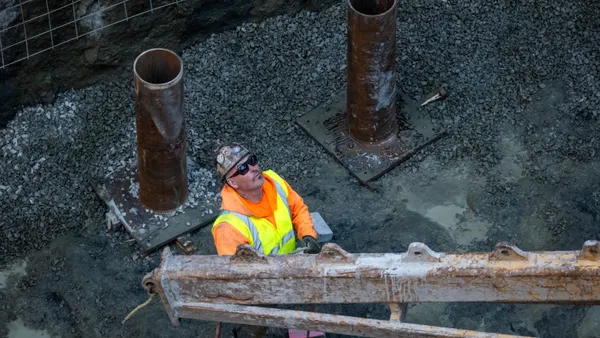Dive Brief:
-
Housing may have taken a back seat during the 2016 presidential campaign, but programs associated with sheltering low-income individuals and families could face considerable cuts under President Donald Trump’s full 2018 budget proposal, released Tuesday.
-
Overall, the budget considerably raises economic growth projections and cuts or significantly reduces funding for social welfare programs in an effort to balance the federal budget in the next 10 years, according to NPR. This follows the release of the "skinny" budget in March, which broadly outlined the administration’s discretionary spending priorities.
- One area where housing is concerned is the Department of Housing and Urban Development, which would see its funding contract by $6.2 billion, or 13.2%, as compared to 2017. The cuts focus on big-ticket community development grant programs that the administration has identified as too broad as well as rental assistance reform, according to The Washington Post. The $3 billion Community Development Block Grants program accounts for half of the department's cuts.
Dive Insight:
A common thread throughout the president’s proposed budget is the shift of funding responsibility for community and economic development activities to state and local governments. Such is the case for affordable housing programs including the CDBG and HOME Investment Partnerships programs, for which the proposed budget drops all or most new federal funding.
Moving responsibility further down the line without federal dollars to back it up could require states and communities to raise taxes as well as explore public-private partnerships and other alternative funding methods. However, many communities are reluctant to rely on the private sector for long-term support.
Affordable housing advocates have pushed back on the cuts, saying that the measures also reduce operating and capital expense budgets that help them maintain existing facilities, which already fall short of demand. According to the Congressional Budget Office, less than one-quarter of households that qualify for federal rental assistance receives it. For the 43.6 million renter households in the U.S., 11.4 million earn 30% of the area median income or less, according to the National Low Income Housing Coalition, and there is currently a shortage of 7.4 million affordable rental homes.
The proposed budget also eliminates funding for the Housing Trust Fund. The program was borne from the federal bailout of government-sponsored enterprises Fannie Mae and Freddie Mac in 2008, but only got off the ground fully last spring, generating funding through set-asides on the lenders’ activity, CityLab’s Kriston Capps explains. He adds that the cost savings attributed to the cut rely on considerable home-sales growth whose set-asides could have instead been used to help the country balance out its shortage of affordable housing.
Requested cuts at HUD come alongside reductions in the budgets of other departments, including Health and Human Services (-16%), Education (-14%), Transportation (-13%) and Energy (-6%). Other agencies, including the Environmental Protection Agency (-31%) and the Small Business Administration (-5%), could face budget cuts.













